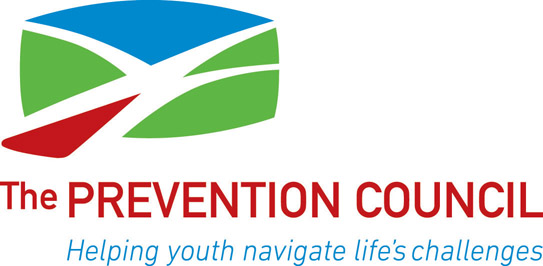September 13, 2016
Seen in: The Daily Gazette
Story by: Cady Kuzmich
Link to full article: http://www.dailygazette.com/news/2016/sep/13/heroin-opioid-demo-spreads-overdose-knowledge/
Helping heroin addicts stay safe and get help is personal for Project Safe Point’s Alfonso Ferrara.
When he was born, he was born in detox.
“I come from a family of addicts. My mother got clean as soon as I was born so I grew up in the recovery phase,” said Ferrara. “I’ve seen what addiction does. I’m not there telling them ‘no.’ I’m there to make them safe.”
He led a heroin and opioid overdose prevention demonstration at the Clifton Park – Halfmoon Library on Moe Road Monday evening, September 12.
Ferrara studied psychology at SUNY Albany and has been working on education initiatives with Project Safe Point for about four months.
About two dozen community members, including concerned family members and retired nurses, gathered in a small conference room to learn how to properly administer NARCAN to help save someone who has overdosed. Some of those in the room worked with addicts professionally, witnessed overdoses or have a loved one who is addicted to heroin. Everyone who attended the event was given a NARCAN kit to take home.
A retired nurse from Schenectady, who wished to remain anonymous, described stopping at the scene of an overdose on Balltown Road in Niskayuna on August 12. “I was on my way to the bank and saw the police pulled over. I told them I’m a nurse and asked if I could help. They pulled the man from his car. He was grey and blue. We gave him CPR for 17 minutes but he was too far gone. He was 49 years old. The police were all out of NARCAN,” she said.
Another woman expressed worry and concern for her stepson, who is an addict.
Project Safe Point, which falls under Catholic Charities, embraces the notion of harm reduction. According to their website, practical harm reduction incorporates “a spectrum of strategies: from safer use, to managed use to abstinence to meet drug users ‘where they’re at,’ addressing conditions of use along with the use itself.”
Project Safe Point facilitates a needle exchange program so drug users have the option to use sterile needles rather than reusing their old ones. “If 10 syringes cost 10 dollars at CVS, they’re going to reuse their old syringes. When people are really addicted, they keep using so they don’t feel sick all the time. Withdrawal won’t kill you, but it can feel like it’s killing you,” Ferrara added.
During his demonstration on how to administer NARCAN, Ferrara discussed the difference between a “heavy nod” and an overdose. If a drug user is in a heavy nod, simply enjoying their high and ignoring the outside world rather than having overdosed, Ferraro said announcing you are about to administer NARCAN may help snap them out of it. NARCAN effectively throws the drug user into withdrawal, according to Ferrara.
If you find an individual who might have overdosed, you should check their responsiveness. A firm sternum rub should wake anyone who is simply in a heavy nod. If the individual is unresponsive even after a sternum rub, Ferraro said the next step is calling 911. If you need to leave the room in order to call 911, place the individual in a safety position on their side before leaving the room. After calling 911, begin administering NARCAN. Inject the drug into a large muscle like the upper arm, thigh or butt. It should take about two to three minutes to kick in, so you will need to do CPR while you wait to see if it took effect. If the individual is still unresponsive after the first three minutes, try administering another dose of NARCAN. “It can’t hurt you,” said Ferrara.
The NARCAN kit comes with two vials of NARCAN and two big-tipped syringes. The syringes feature big tips so they can pierce through clothing if necessary. Ferrara advised those who would be administering NARCAN to avoid getting air in the syringe. Since NARCAN is injected into large muscles rather than veins and time is of the essence in overdose scenarios, Ferraro said not to worry too much about minor air bubbles.
Once the NARCAN begins working, the individual will likely take a big gasp of air and begin experiencing withdrawal symptoms — it’s likely they will want more opiates. Ferraro said remaining calm and using simple, straight-forward messages is key.
Ferraro noted the NARCAN kits shouldn’t be exposed to extreme temperatures, so storing the kit in a car wouldn’t be ideal. He suggested tucking the small blue kit in a backpack or a purse.
Another method of responding to an overdose involves a nasal spray, but Ferrara said a shortage has prevented Project Safe Point from being able to distribute them to the public. For those who might have access to the nasal spray, Ferrara said it’s important to only spray half of the dose in each nostril so it can be properly absorbed.
Heroin addiction has been a growing problem in upstate New York. The number of people upstate seeking treatment for heroin addiction increased by 222 percent from 2004 to 2013 — that’s 86 percent higher than the spike in heroin-related treatments statewide in that same time frame, according to James Norton of the Southern Saratoga County Alcohol and Substance Abuse Prevention Council
The number of heroin-related fatalities in the United States has nearly tripled since 2010, according to the Center for Disease Control. The demographic most at risk for heroin addiction are people ages 18 to 25, said Norton. Heroin use “more than doubled” among that demographic in the last 10 years, according to the CDC.
